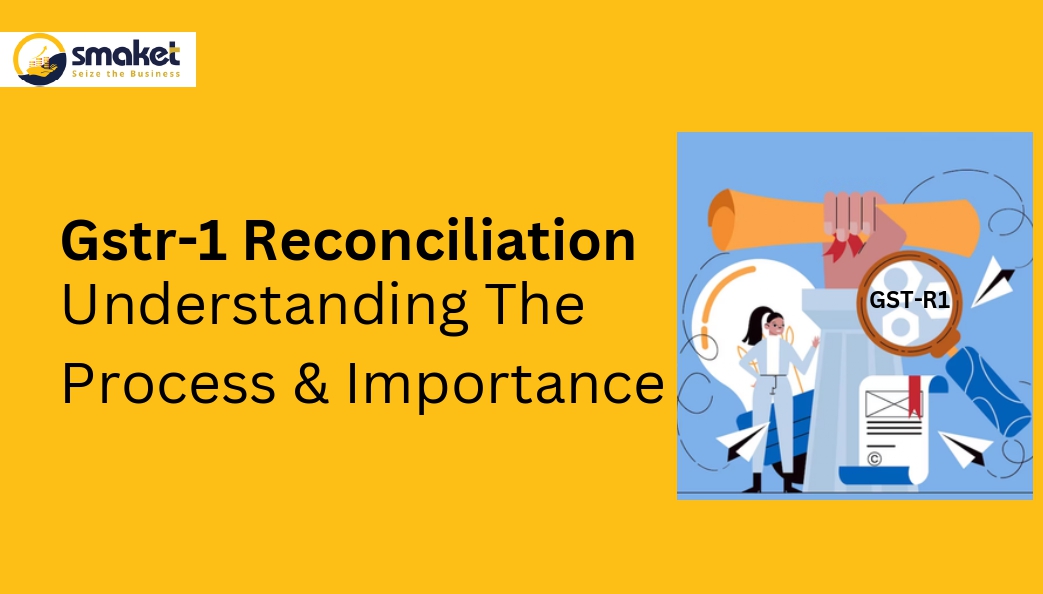When it comes to complying with GST guidelines, GSTR-1 reconciliation plays a important position in ensuring accuracy and transparency on your enterprise’s tax filings. In this weblog, we are able to discover the idea of GSTR-1 reconciliation, its significance, and how to execute it correctly to streamline your GST reporting.
What is GSTR-1 Reconciliation?
GSTR-1 is a month-to-month or quarterly go back that captures the outward materials or income of a registered taxpayer. Reconciliation, in this context, refers to the process of go-verifying the information submitted in GSTR-1 with different applicable files, together with invoices and monetary data. The purpose is to perceive discrepancies and rectify them earlier than submitting the final return.
The Importance of GSTR-1 Reconciliation Ensuring Accuracy:
Reconciling GSTR-1 information helps pick out any discrepancies between the said figures and real transactions. This ensures accurate reporting, reducing the risk of consequences because of wrong facts.
Minimizing Errors:
Errors in GSTR-1 can result in a mismatch in input tax credit claims for recipients. Reconciliation minimizes such mistakes, making sure seamless enter tax credit float all through the supply chain.
Compliance with GST Laws:
GSTR-1 reconciliation is critical for GST compliance. Failing to do so may additionally attract scrutiny from tax authorities and affect your business’s recognition.
Preventing Tax Leakage:
By reconciling GSTR-1 data, you can identify unreported or under-stated transactions, stopping tax leakage and also maximizing your tax financial savings.
Executing GSTR-1 Reconciliation Collecting Data:
Gather all applicable documents, inclusive of invoices, debit/credit score notes, and also other financial facts associated with your outward supplies.
Data Cross-Verification:
Carefully cross-affirm the information for your GSTR-1 with the statistics out of your supply documents. Ensure that values fit and there are no discrepancies.
Identify Discrepancies:
If any discrepancies are discovered in the course of the pass-verification manner, inspect the reasons at the back of them. Correct any errors or omissions promptly.
Update GSTR-1:
After reconciling the statistics, update your GSTR-1 go back with the perfect and accurate facts.
Maintain Records:
Keep detailed information of the reconciliation method and the modifications made in your GSTR-1. These statistics could also be useful for destiny reference and audit functions.
Conclusion:
GSTR-1 reconciliation is a critical step in GST compliance that should no longer be neglected. By investing time in studying and comparing the information, you may make certain the accuracy of your tax returns and also avoid capability penalties. Embrace this system as an opportunity to decorate your monetary control and streamline your stock control, in the end contributing for your enterprise’s fulfillment in the long run.
FAQ:
1. What takes place if I fail to reconcile my GSTR-1?
Failing to reconcile your GSTR-1 can result in discrepancies to your tax filings, which might also result in consequences and also scrutiny from tax government. It is vital to reconcile to keep compliance and accuracy in GST reporting.
2. Can I reconcile GSTR-1 by myself, or do I want professional help?
GSTR-1 reconciliation may be a complicated technique, specifically for companies with a massive volume of transactions. While small agencies would possibly cope with it independently, looking for professional help from accountants or tax specialists can make sure an intensive and also accurate reconciliation.
3. Is GSTR-1 reconciliation required for businesses with zero-rated or exempt resources?
Yes, even if your business deals with zero-rated or exempt substances, GSTR-1 reconciliation is vital. Though there might not be outward taxable components, you ought to ensure accuracy in reporting other transactions and input tax credits.
4. How frequently ought to I behavior GSTR-1 reconciliation?
It is recommended to perform GSTR-1 reconciliation regularly, preferably on a monthly foundation. Regular reconciliation minimizes the possibilities of errors and also ensures well timed rectification of discrepancies.
5. Can GSTR-1 reconciliation assist me pick out capability fraud or misappropriation?
Yes, GSTR-1 reconciliation can aid in detecting potential fraud or misappropriation of finances. By cross-verifying data and also comparing it with supply documents, any unreported or manipulated transactions may be identified and addressed directly.

